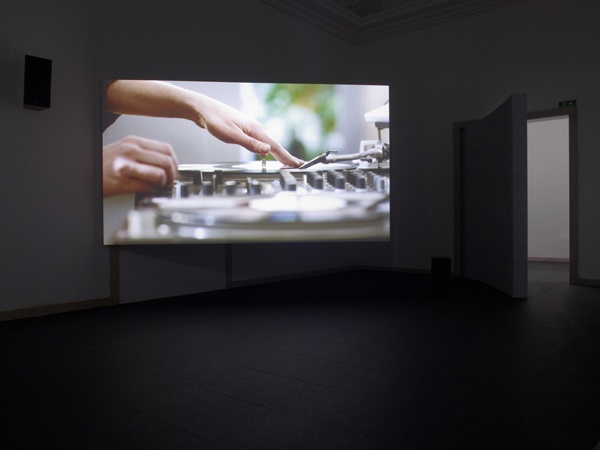Anri Sala
Wednesday, 12 June 2013
Work from Ravel Ravel Unravel.
“Anri Sala’s project for the French Pavilion has been conceived for the space of the German Pavilion where it is exceptionally being exhibited, and is entitled Ravel Ravel Unravel (2013). The title of the piece is a subtle play on words based on the verb to ravel and its opposite, to unravel, as well as a reference to the famous French composer Maurice Ravel, who in 1930 composed the Concerto in D for the Left Hand which is at the heart of Anri Sala’s project.
Occupying the central space of the German Pavilion, the first of two works, entitled Ravel Ravel, consists of two films, each focused on the left hand of a famous pianist: Louis Lortie and JeanEfflam Bavouzet. Both of these performers were invited by Anri Sala to perform Ravel’s Concerto, accompanied by the Orchestre National de France, conducted by Didier Benetti.At the centre of Anri Sala’s project is the interpretation of the same piece of music by the two musicians. As the artist explains: ‘each film is focused on the choreography of the left hand encompassing the entirety of the keyboard, while the right hand remains still.’
These two films are projected simultaneously in a semi-anechoic chamber, and, thanks to the sound spatialisation work of sound designer Olivier Goinard, they create the impression of a musical ‘race’, due to the discrepancy between their tempos that has been prepared beforehand by Anri Sala and by the composer and conductor Ari Benjamin Meyers. The artist continues: ‘my intention, is to make a space resound consecutively to the temporal gap between the two performances; to paradoxically create an ‘other’ space in an environment conceived to annihilate the sense of space (by suppressing echoes).’
In the adjacent rooms, two other films are presented under the single title Unravel. Chloé, a DJ, is filmed alone, mixing each of the two interpretations and trying to unite the two versions of the Concerto through her unique interpretation.
Unravel and Ravel Ravel generate a three-fold narration. The viewer indeed first discovers a film centred on Chloé’s face and whose meaning, in the absence of any music, remains open. After the Ravel Ravel installation, the last film (and second part of Unravel) finally unveils the movements of the DJ filmed in the German Pavilion, on the musical score of Ravel’s «re-unified» Concerto.In these films, Anri Sala continues his exploration of space and sound, as well as the silent language of the body. He offers an experience based on difference and sameness, in an ambitious piece of work that further pushes his experimentations in sound spatialisation. The work appeals just as much to the viewer’s intellect as to his body, creating a powerful physical and emotional experience, submerging the viewer in its music.-Stefano Cernuschi



